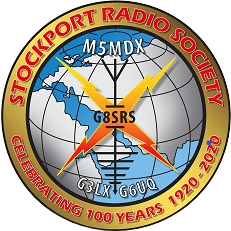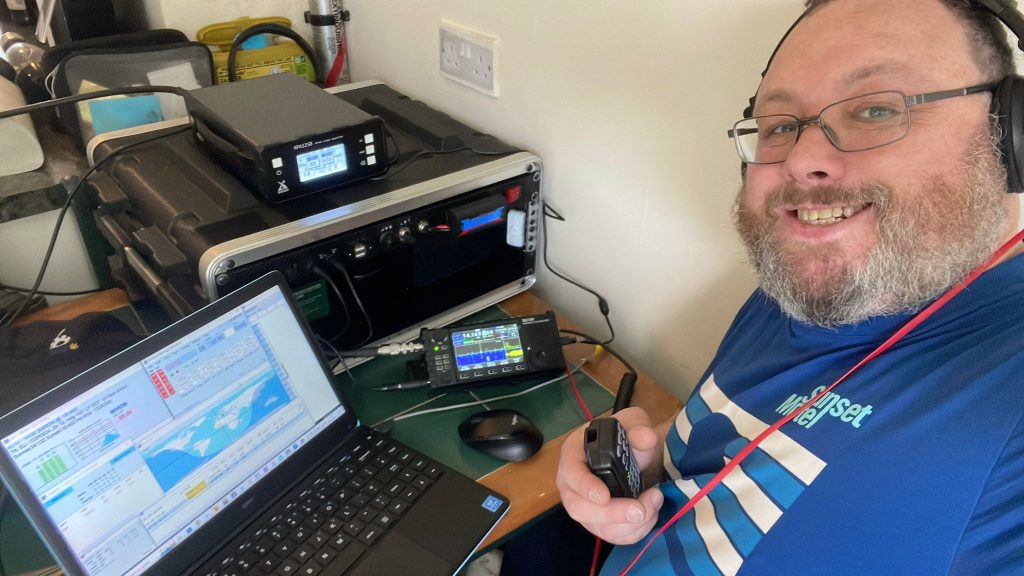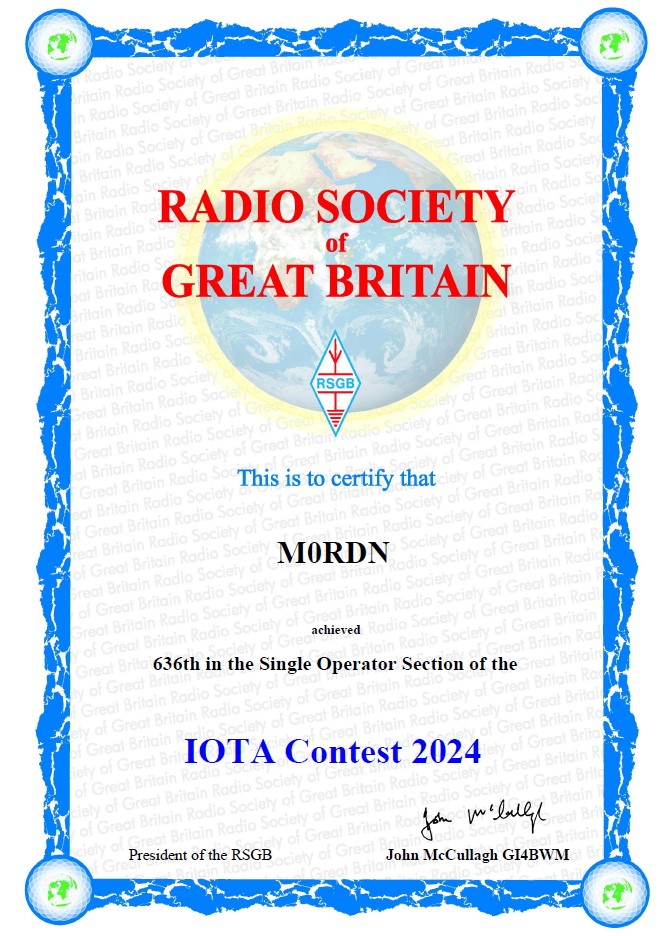CQ WPX SSB Contest 2025
Tales from not the farm… by Stephen Armstrong ME0RDN
Well, contest season returns and CQWPX is the first of the big five I generally have a bash at. I’m lucky once again to get the opportunity to be based in Hawkshaw, so all being well, it will still be electrically quiet.
I have some housekeeping things to do on the kit that I’ve been putting off. This contest will see a welcome return of the IC-7100 as the rig of choice. It will be a shame to lose the waterfall of the X6100, but it’s a better choice as it’s a better radio.
The battery power station will be boosted to 57.6Ah and should easily give me the maximum 32h of operating time. Still planning on doing a maximum of 24 hours (managed 20 for CQWW), but it’s always nice to have the headroom when the bank runs all of the peripherals as well.
As far as antennas, I’m thinking about giving two a go this time, with the trusty home brew Rybakov on the 12m pole and a half sized G5RV on the 9m pole. Not quite sure how I plan on setting them up yet, but it will be a challenge as usual. I will have just over an hour on Saturday morning.
Looking forward to to hearing the return of G5O for this contest (and I’m promising myself to log them correctly this time).
I’m not going to make it to the club tonight for work reasons, so I will be making an all important link cable up between the rig and ATU, and I plan on prepping the lights for the Rybakov. To warn against low flying model aircraft.
Anyway. I’ve started this thread so that if anyone is having a bash at this weeks contest and wants to share their planning or plans for it, please feel free to join in – contesting for me is still experimental, but most of all it’s fun.
I’ll add some more as the prep goes on.
Monday 24th March 2025
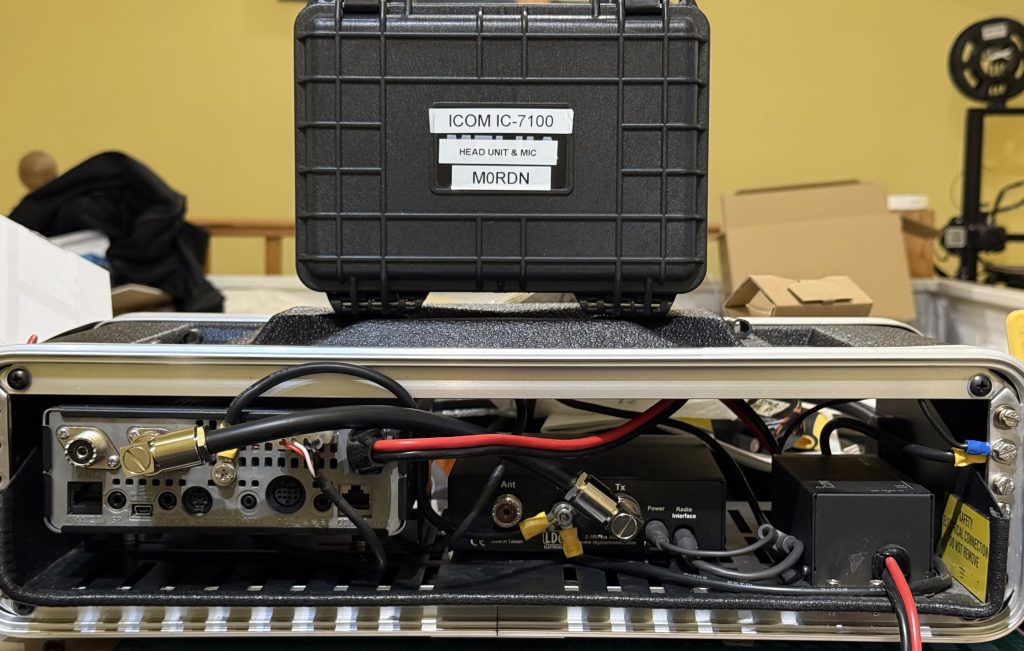

Tales from not the farm (continued) by Stephen Armstrong ME0RDN
Had a good evening of prep work here at the shack.
Finally got round to finishing the link cable (that’s the one with right angled PL239’s) so the back of the rig is all nice and compact. I’ve also got the head unit and mic in a box, so it’s less prone to damage.
The battery pack is all charged up ready for running and I have everything in a nice neat pile ready for putting in the Car this weekend.
It’s a Saturday morning setup for me, so that will need to be fairly quick and apparently I need some ladders to get up the garden too. The only thing I’m really debating about is which way to run the G5RV as for this contest last year I ran it east west and got some great contacts in South America. I would be interested to hear what you all think.
Thanks for your kind words Pete (M1PTR). I’ll be listening out for G50 and G6UQ this weekend, and perhaps we can have our customary brief chat too.
Hope everyone else is making good prep work for the contest… only 27 hours to go!
Stephen. ME0RDN (for this contest 🙂 )
Thursday 28th March 2025
2024 A contest year without really contesting by Stephen Armstrong M0RDN.
As we launched into 2024, 2E0SUG was put to bed as M0RDN launched. The plan remained the same – to keep experimenting.
With a work trip to South Africa planned, I’d purchased a Xeigu 6100 to take with me. I’d also started experimenting with some 12V 7.6Ah LiFePo5 batteries. One was for home use with the Xeigu, but I quickly got three and started learning the intricacies of charging them up whilst they were all in parallel.
However, contest season arrived and that gave me the opportunity to try these batteries out. ME0RDN took part in CQWPX SSB with a home brewed 12m Rybakov 806, a half size G5RV and an Icom 7100. It was during this contest that we tried the batteries for the first time and had great success reducing the noise level. It allowed me to work 15m well into midnight (which was especially good that day).
At the end of the contest and after checking, I finished up a respectable 42nd in England and 2nd in England in the Rookie category.
After WPX, I started to reflect on how I was going to attempt IOTA. This was the first contest I ever took part in. Band conditions don’t tend to be great, but it’s a fun contest to do.
It was also the first contest I was going to do at the new QTH, so this brought some challenges. It’s too small for the half size G5RV, so that meant operating on only the Rybakov.
I’d also made the decision to build the Mk1 Power station. Initially, this was to consist of two banks of 12V 7.2AHliFePo5 batteries, giving me 21.6AH per bank. I estimated this should be enough to run the station for 20hours, plenty for a casual contester.
The third difference was to use my Xeigu X6100 with the xpa125b linear amplifier as this supposedly took less current than the Icom 7100.
Setup was characteristically quick and took no less than an hour. Sadly, the bands were not great again, but I managed 636th overall (an improvement from last year’s 1333rd) and 20th in the single op/ssb/12hrs/non-assisted-low power category. I was happy with that.
Next came my favourite contest, UKEI DX SSB. A real friendly contest that in the previous year, I managed my first transatlantic QSO. Band conditions weren’t great again, but the technical change was adding ground based radials. It’s only a small QTH and not big enough for anything else.
Again, battery power was used, and the power station had had a bit of an upgrade with charging circuits built in. I managed 93rd overall, 30th in England and 17th in the UKEI low power unassisted section. Again, improvements on the previous year.
The next challenge was SSB field day, and this was the reason for building the power station in the first place. The QTH for the contest was to be Hawkshaw in my partner’s parents back garden. This contest was wet… very wet., but the remote location gave the opportunity for much quieter operating conditions.
It turns out that as G5O was not participating in this contest, I was the only portable station representing the club, and managed 17th in the low power unassisted section, with 2nd as a single op. Unfortunately, I’d forgotten to register my location for regional 1 field day. Heavily regretting it now.
The final challenge of the year was CQ WW and I’d managed to secure some improvements again. First, the club gave me some better coax to reduce my losses and secondly, I raised the radials up on canes to improve take off.
Band conditions were good again, but I didn’t realise how good a station I’d built until I started operating. It really was like shooting rats in a barrel and so managed 601 QSO’s in the 24 hours of operation. This is definitely a record for me. I also spent a good amount of that calling CQ! Gave me a great amount of confidence.
The one thing definitely distinguished by its absence was G50
Reflecting forward, I still want to do the big 5, but there will be changes. I expect to complete the Mk1 power station1.2 and 1.3 upgrades before CQWPX. I also need to investigate a fault that occurred during WW in the coms between the x6100 and xpa125b, that lost me 10m. I might end up doing WPX with the 7100 again.
Field day next year will be as a fixed station (if I do it). Be great to give the tent a rest. However, since I’ve told my partner that we don’t have to be EU-5 in the next IOTA, she’s hastily looking at island retreats.
Special thanks to all the support everyone at the club has given me this year. Here’s to experimenting in 2025!
Entering RSGB SSB Field Day on SRS’s behalf
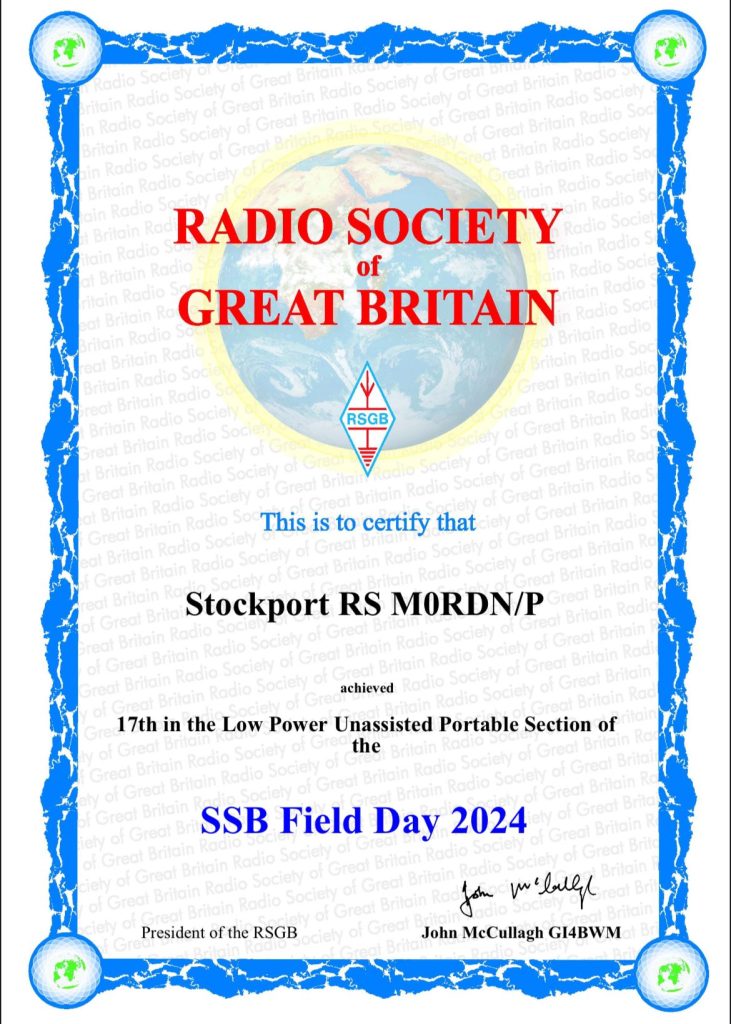
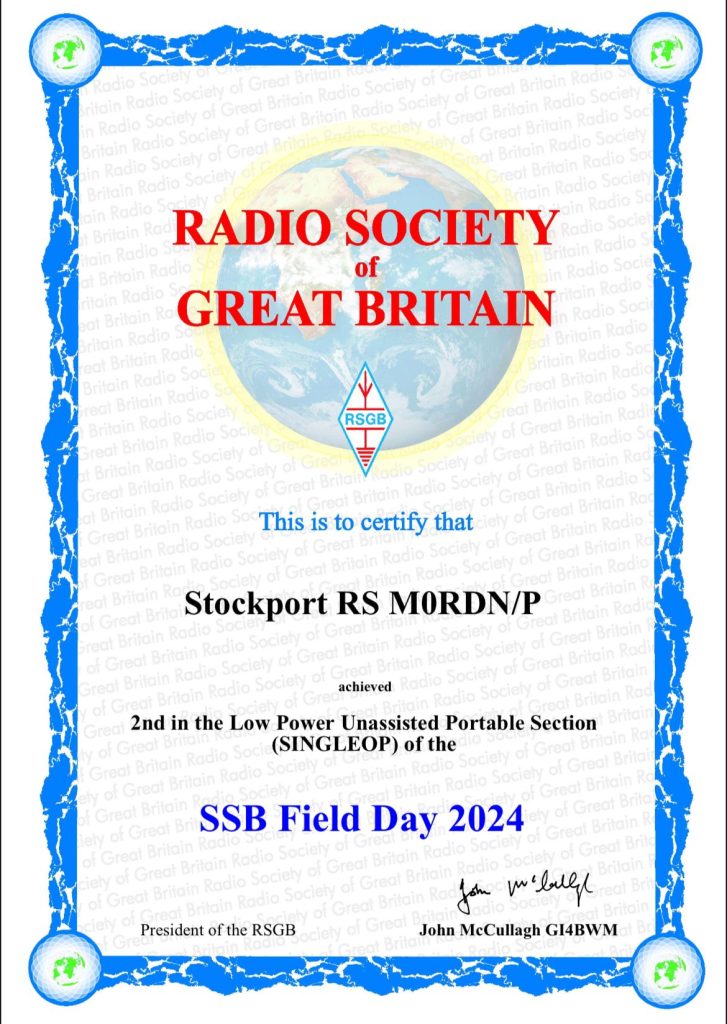
Well done Stephen……
Stephen M0RDN’s IOTA 2024
IOTA was the first contest I took part in as an amateur, and from my memories of the 2023 edition, it was fun, but heavy going. Since I’ve been using the current contest QTH, it’s been a lot better. Still not perfect though.
After a year of contesting, the kit I use has been continuously evolving. It’s still a technical exercise for me, and one of the best opportunities to experiment.
Following the CQ WPX experiment of running on batteries for four hours, I decided to run the whole contest on batteries. I built a power station consisting of two banks of 3x12V LiFePo4 7.2Ah batteries. This goes into a wattmeter and then out to lower current sockets, two switchable USB sockets and a large output connector on Anderson Powerpole connectors.
For the rig, I decided to skip the usual Icom 7100, and purchased the Xeigu XPA125b linear amplifier to run with my Xeigu 6100.
I decided to use the usual 12m Rybakov 806 up the pole and a half size G5RV in the tree. However. For the first time the setup time was extremely limited, not arriving with the kit until 12. However. 1 hour later the station was setup and I started the contest 1 minute late!
My plan was to run for 18 hours, but I set a backup target of entering the 12 hour class if I was too tired. I’m glad I did.
One of the early contacts was G5O and I had a quick chat with Pete M1PTR down at the farm, wishing each other good luck.
I’ve had some issues with my X6100. for a while and it became obvious later in the evening that I was getting rf on my audio on the higher bands. It made it very difficult to transmit as I was hearing some uncomfortable feedback on transmit.
This led to the first big break in the contest, where I was attempting to use a lot of ferrites to shield it out. This was partially successful, but still made it difficult. I still made contacts on all bands though.
The battery pack was a big success. The left bank ran powering the radio, linear and my laptop for 10hrs straight. Maximum current draw was 10A and it stopped after 240wh (having the wattmeter was really useful for that).
I have plans for the next upgrade to that which will increase the capacity of the battery banks (and add a reserve).
I called it a night at 1AM and retired to bed. I was shattered.
On the Sunday Morning, I restarted, only to pause and join into the Sunday morning net in the sun whilst I ate my breakfast.
Bit later, I managed to work G5O again in one of the few times I started running. Had another chat with Pete, then went back to S&P (Search & Pounce) as G5O carried on running with the frequency I’d been calling on.
As I was talking to some Irish stations (with about 45mins left to go in the contest, I noticed that I had operated for 12 hours and then called it a day.
The station took about an hour to pack away too. This is really useful to know as I plan on doing field day as a portable station this year, and I’ll have limited setup and pack away time.
Overall, I’m very pleased with this radio combination. It was nice to have a waterfall for the first time as that made a big quality of life difference.
N1MM said I managed 133 contacts, 53 of which were island stations for about 65k points. As this was 10 times better than last year in a shorter period, I’ll take that. I recon I’ll lose some points in adjudication, but I’m still happy. The next experiment will be UK EI DX SSB, and I’m really looking forward to it.
Stephen M0RDN – 4th August 2024
